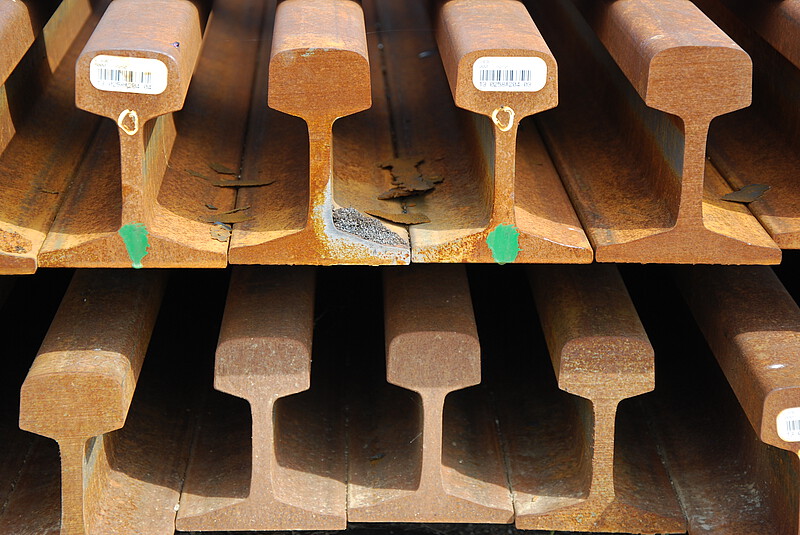Rails
The rail profile commonly used in Germany today is the flat-bottomed foot rail. The cross-section of this rail is very advantageous and it has proven to be very good in the past few years. The wide foot makes the rail resistant to tipping and allows a good pressure transfer to plates, sleepers, ballast and the entire subgrade. The flat-bottomed rail consequently produces a smooth support for rolling stock. In the course of the last decades, the flat-bottomed rail has continuously been developed and improved. There are significant differences in cross-section, weight, length, and hole arrangement of the rail for the attachment of fish plates for the joints.
The dimensions of the normal flat-bottomed rail are:
- rail height,
- foot and head width, and
- the web thickness.
The weight has also varied significantly. In fish-plated tracks (which today are no longer the standard design), there is a difference between the length of the outer and the inner rail in curves. The compensation for the length difference is done by the installation of shorter rails (the so-called compensatory rails). The required number and sequence of the compensatory rails in track curves has to be determined for the respective track curvature and the transition curves (which have a continuously changing radius), on the basis of the curve radius. Fishplate joints must be opposite one another and must not vary more than 30 – 50 mm from the angular position/parallelism.
Rails which deviate from the regular length – with the exception of compensatory rails – need to be painted on both faces with white paint. The length should be written on both sides of the rail web with the same colour paint. Each rolled rail is marked on one side with the rolling and embossed marks.

